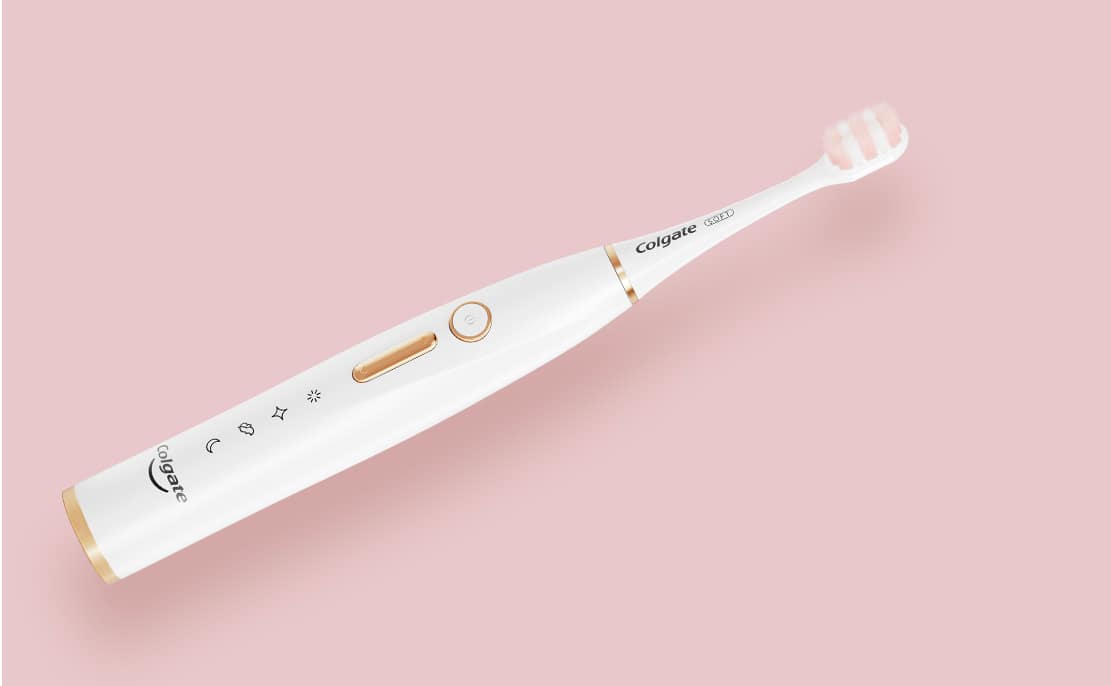Types of Electric Toothbrushes
Check the two main types of electric toothbrushes and how they work.
Oscillating-rotating
Oscillating toothbrushes have a round head that oscillates back and forth, while rotating brushes have a head that spins around. The rotary or oscillatory motion enhances the cleaning action without applying additional force to your teeth.
Sonic toothbrushes
Sonic toothbrushes emit high-frequency vibration waves that influence fluid dynamics around your teeth. This helps to remove plaque and bacteria more effectively than other toothbrushes. Sonic toothbrushes cause less abrasion to the gums than manual toothbrushes.
Features to look for when purchasing an electric toothbrush
When choosing an electric toothbrush, there are several features you should look for:
Number of brush strokes per minute (BPM)
The higher the BPM, the more effective the toothbrush will be at removing plaque and bacteria. Most oscillating-rotating toothbrushes have a BPM of around 1,300 to 8,800, while sonic toothbrushes have a BPM of 24,000 to 30,000 or more.
Timer / quadrant pacer
An electric toothbrush with a timer will let you know when you have brushed for the recommended two minutes. Some brushes also have a quadrant timer that will break your brushing session into four equal parts, so you can ensure that you are brushing all areas of your mouth.
Range of cleaning modes
Some electric toothbrushes come with more than one cleaning mode, such as high speed, sensitivity, or gum care, among others. You can also select between different levels of vibration intensities (in sonic toothbrushes). Moreover, some even allow you to combine different modes and intensities to tailor your brushing experience.
Pressure sensors
Electric toothbrushes with pressure sensors will alert you when you apply too much pressure to your teeth, preventing you from damaging your gums.
Waterproof
Some people may like to brush their teeth in the shower, and if this is something you like to do, then make sure to choose a waterproof toothbrush.
Charging method
Electric toothbrushes come with two charging methods: inductive and USB. Inductive charging involves placing the toothbrush in a special cradle, while USB charging can be done with any standard USB port.
Rechargeable or disposable batteries
Electric toothbrushes come with either rechargeable or disposable batteries. Rechargeable toothbrush models are a better value in the long run, but disposable models are more convenient if you do not have a place to recharge them.
Travel case
If you plan on travelling with your electric toothbrush, then make sure to choose one that comes with a travel case. This will help protect the brush head from damage while you are on the go.
Type and size of the brush head
Most electric toothbrushes come with a replaceable brush head, so you only need a new brush head after every 3 months (as recommended by dental professionals) instead of replacing the entire body. The brush head's shape and size may vary, so it is important to find one compatible with your teeth. You might prefer smaller electric toothbrush heads, as they can clean in hard to reach places.
Bristle stiffness
Some people prefer soft bristles, while others prefer stiff bristles. Electric toothbrush manufacturers usually have several different levels of bristle stiffness to choose from. If you have higher sensitivity, look for a soft bristle electric toothbrush.
What are the benefits of an electric toothbrush?
There are many benefits to using an electric toothbrush, including:
Better plaque removal: Studies have shown that electric toothbrushes remove plaque more effectively than manual toothbrushes. This is because the powerful waves of sonic electric toothbrushes help to create tiny bubbles in the water around your teeth, which helps to loosen plaque and bacteria.
Reduced tooth decay and gum disease: Electric toothbrushes can be more effective at removing plaque and bacteria than manual toothbrushes, which can help to reduce the risk of tooth decay and gum disease.
Improved oral health: Regular use of an electric toothbrush can improve your oral health overall, including reducing bad breath, gingivitis, and plaque build-up.
Convenience: Electric toothbrushes are very convenient to use and can be easily incorporated into your daily routine. Smaller heads mean that they can easily cover all places inside your mouth.
How to use an electric toothbrush?
There are a few things you should keep in mind when using an electric toothbrush:
Always brush your teeth for at least two minutes, twice a day.
Use gentle circular motions, and make sure to brush all areas of your mouth.
Try to use different cleaning modes and intensities to find the one that works best for you.
Replace the brush head every two to six months, depending on the type of brush head.
Clean the toothbrush handle and charger regularly to prevent bacteria build-up.
Which type of electric toothbrush is best for you?
There are two types of electric toothbrushes to choose from: Oscillating-rotary and sonic.
Oscillating toothbrushes, as the name suggests, oscillate back and forth to help remove plaque, while rotary toothbrushes rotate in a circular motion. The sonic toothbrushes create high-frequency waves that help to loosen plaque from teeth.
While each one delivers a better brushing result than manual toothbrushes, it is a personal preference for which type you like the most.
If you are not sure, try the Colgate Electric Toothbrush that comes with a range of impressive features.
It is a sonic toothbrush that allows you to tailor your brushing experience to your comfort with four modes of cleaning (Squeaky Clean, Sparkle, Gum Care and Night Spa) and ten levels of vibration intensities. Together, you get 33 custom combinations* to personalise your brushing experience.
With built in memory, it recognises your brushing mode and intensity preference, and the pressure sensor helps you monitor the strength of your brushing.
It pairs well with the Gum Care Brush Head that has extra-soft tapered bristles for a deep and gentle clean.
Its Smart Coaching uses a Quadpacer that alerts you after you have brushed one quadrant of your mouth for 30 seconds, and it is time to move on to the next quadrant.
*Squeaky Clean, Sparkle, and Gum Care modes have 10 levels of intensities; Night Spa has 3 levels of intensities
FAQs about electric toothbrushes
Q. Which type of brush head is best for me?
A. Choose the brush head depending on the sensitivity of your teeth and gums. If you have sensitive teeth and gums, go for a brush head with soft bristles.
Q. How often do I need to replace the brush head?
A. Replace the brush head every three months (as recommended by dental professionals), depending on the type of brush head.
Q. What is the best way to clean my electric toothbrush?
A. Clean the toothbrush handle and charger regularly to prevent bacteria build-up. First, rinse the brush head after cleaning your teeth. Then detach the brush head and rinse again. Tap off excess water from the brush head. However, do not wet the handle and use a cloth to wipe it clean.
Q. Can I use my electric toothbrush with braces?
A. Electric toothbrushes are safe to use with braces, but it is important to find a brush head compatible with your teeth.
Conclusion
We hope this comprehensive electric toothbrush buying guide has helped make your decision a little bit easier. Weighing up all of the benefits and getting a sense of what features are most important to you is key when making this purchase. And do not forget – no matter which electric toothbrush you choose, always be sure to stick to the recommended brushing schedule, and visit a dental professional regularly.










